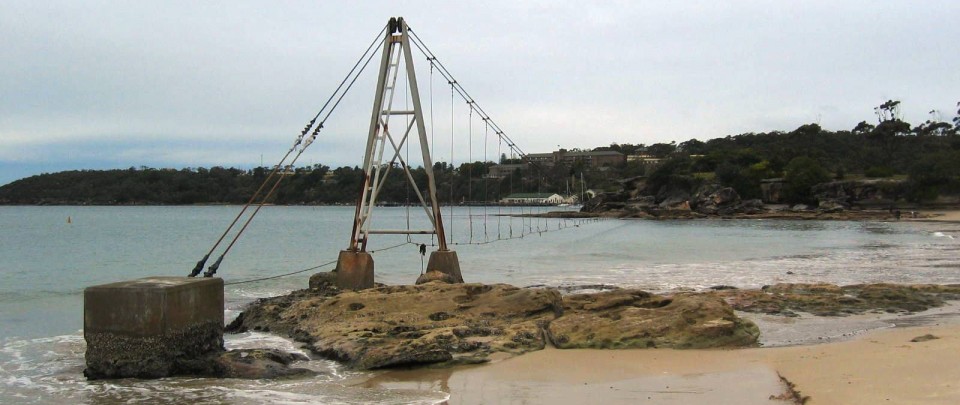Livingston ‘Hop’ Hopkins, Australia’s best known cartoonist at the time, established the Balmoral Artists’ Camp at Edwards Beach in 1883. Recently arrived from the United States, he was so impressed with the view across Hunters Bay that he rented 50 acres of bushland near a freshwater creek and pitched a four-roomed tent there. It was at the bottom of what is now Awaba Street.
Friends such as fellow artists Julian Ashton and Henry Fullwood subsequently joined him. The camp was also sometimes known as Euroka. Gavin Souter describes it as a ‘retreat from bourgeois urban existence, a good place for painting, swimming, fishing and conviviality’. Some of the tents had wooden floors and carpets. At one stage there was a separate dining tent. Artists using the camp as a base helped ensure, Souter writes, that ‘Mosman may well have been painted more than any other Australian landscape’. Visitor access was usually by ferry to Mosman Bay and then by foot. The famous author Robert Louis Stevenson visited in the 1890s and gave a copy of his Treasure Island to the camp cook.
Another prominent literary visitor was Ada Cambridge, who uses the camp for a scene in her 1891 novel A Marked Man. She remembers it as:
a cluster of tents, a little garden, a woodstack, a water tub – almost hidden in the trees and bushes until one was close upon it; and the camp looked out upon the great gateway of the heads, and saw all the ships that passed through…But the ships did not see it. Nothing was visible except a little wisp of bunting fluttering above the tall scrub.
She refers to the camp setting once more in Fidelis (1895) and writes about it in her reminiscences:
The permanent tent, combining sitting- and bedroom, was the drawing-room of groups of us in turn; we crowded on the covered-up truckle beds and the floor (of pine boards, well raised from the sand) for afternoon tea; at lunch we sat on planks under an awning, at long plank tables, like children at a school feast.
Legislation passed in 1903 that allowed for daylight bathing brought crowds of people to Balmoral and led to the camp’s demise. Seven swimmers calling themselves ‘The Smugglers’ took over part of the campsite. They established the Balmoral Beach Club in 1914. In January 1915 a clubhouse was opened where tents were previously located. John Quinn, the New South Wales Parliament’s Librarian, lived in a shack on another part of the site until Mosman Council resumed his land in 1931.
Sources
Balmoral Beach Club, http://www.balmoralbeachclub.com.au/, accessed 9 June 2015.
Bohemians in the Bush: The Artists’ Camps of Mosman, Art Gallery of New South Wales, Sydney, 1991, especially ch 4.
Historic Guide to Balmoral, Mosman Historical Society, Mosman, 2010.
Gavin Souter, Times & Tides: A Middle Harbour Memoir, Simon & Schuster, Sydney, 2004, pp 208-215.

(Mosman Library)
(David Carment, 2014)
David Carment



